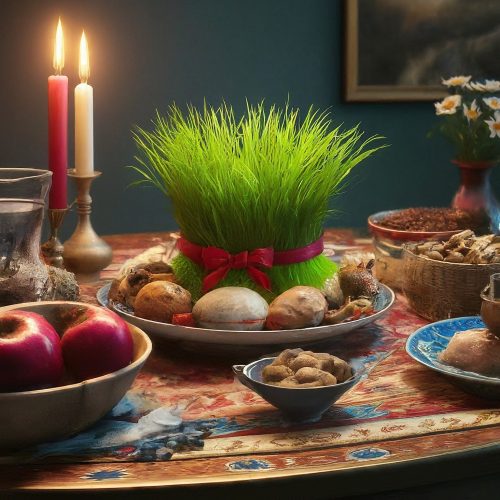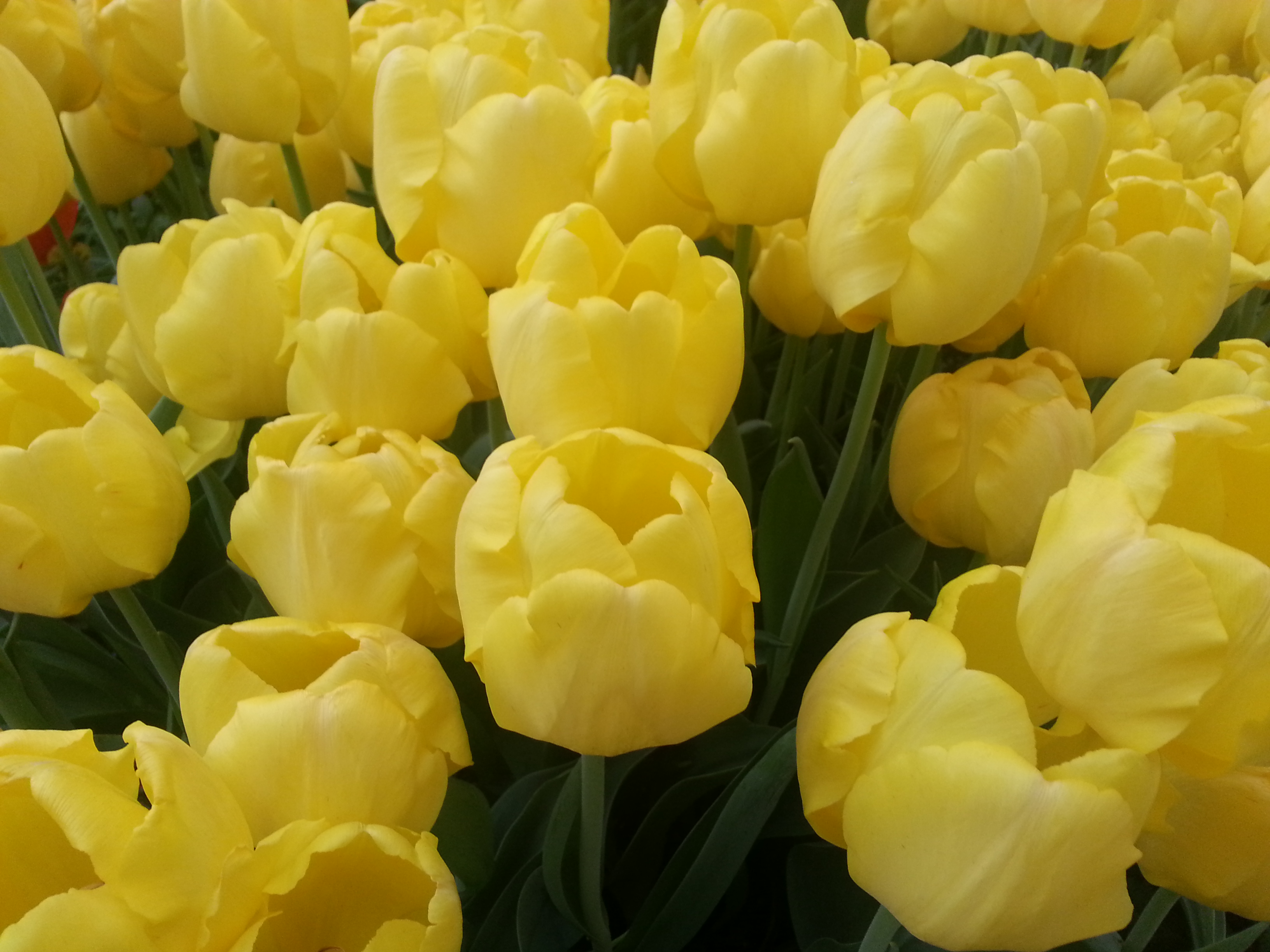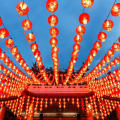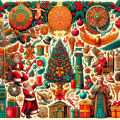
Nowruz, also known as the Persian New Year, is a celebration with roots stretching back over 3,000 years. It’s a joyous occasion filled with symbolism, rituals, and a vibrant spirit of renewal. Celebrated on the vernal equinox (usually March 20th or 21st), Nowruz marks the first day of spring and the beginning of a new year in the Iranian calendar. This festival transcends religious and national boundaries, observed by millions across the globe in countries like Iran, Afghanistan, Tajikistan, India, Central Asia, and beyond.
Origins of Nowruz
The origins of Nowruz are deeply intertwined with Zoroastrianism, one of the world’s oldest continuously practiced monotheistic religions. In Zoroastrian cosmology, Nowruz symbolizes the triumph of light over darkness, good over evil, and the promise of rebirth that comes with springtime. Ancient Persians associated the renewal of nature with the renewal of the spirit.
However, Nowruz’s influence extends far beyond its Zoroastrian origins. It has been embraced by diverse cultures and religions over the centuries, becoming a secular celebration with unique regional variations.
How Nowruz is Celebrated
Nowruz celebrations are rich in symbolism and traditions, with many practices centering around themes of renewal and purification. Here are some of the key ways Nowruz is observed:
- Khouneh Tekouni (Spring Cleaning): In a time-honored tradition, people meticulously clean their homes in the days leading up to Nowruz, symbolizing a fresh start.
- Haft-Seen Table: The Haft-Seen table is a central element of Nowruz celebrations. This beautiful display consists of seven symbolic items, all starting with the letter ‘S’ in the Persian alphabet. Typical items include:
- Sabzeh (wheat or lentil sprouts): Represents rebirth and growth
- Senjed (dried oleaster fruit): Represents love
- Sib (apple): Represents beauty and health
- Sir (garlic): Represents protection and medicine
- Samanu (sweet pudding): Represents fertility and abundance
- Sumac (berries): Represents the sunrise and triumph of good over evil
- Serkeh (vinegar): Represents patience and the passage of time
- Chaharshanbe Suri (Festival of Fire): Taking place the Wednesday before Nowruz, bonfires are lit, and people jump over the flames. The fire symbolizes purification and burning away misfortunes from the past year.
- Visiting Loved Ones: Nowruz is a time for family gatherings, visiting friends and relatives, and paying respects to elders.
- Sizdah Bedar (Nature Day): On the 13th day of Nowruz, families leave their homes, enjoying picnics and spending time in nature. They throw the sabzeh (sprouts) from their Haft-Seen table into running water, letting go of any negativity from the previous year.
Global Variations
While the core themes of Nowruz remain consistent, celebrations differ slightly across regions:
- Central Asia: Festive preparations often involve a month of celebrations, with each Tuesday dedicated to an element – water, fire, earth, and wind.
- Azerbaijan: Nowruz holds special significance here due to past suppression under Soviet rule, leading to particularly joyous celebrations.
- India: Predominantly celebrated by the Parsi community, who trace their roots to Persia.
Nowruz: A Celebration of Life and Renewal
Nowruz stands as a testament to the enduring power of tradition and a time of optimism and renewal. Whether practiced with a religious or secular emphasis, Nowruz carries a message of hope that resonates throughout the world.
Article above assisted by Google Gemini Advanced, article below assisted by ChatGPT 4.0.
The History and Celebration of Nowruz: A Comprehensive Guide
Nowruz, also known as the Persian New Year, is an ancient festival marking the first day of spring and the beginning of the year in the Iranian calendar. It is celebrated on the vernal equinox, which usually occurs on March 20th or 21st. This millennia-old tradition symbolizes the rebirth of nature, the departure of winter, and the welcoming of a prosperous new year. In this comprehensive guide, we delve into the rich history of Nowruz and explore the diverse ways it is celebrated across various cultures.
The Origins of Nowruz
Nowruz’s origins can be traced back to the 2nd millennium BCE, making it one of the oldest continuously celebrated festivals in the world. It is deeply rooted in the rituals and traditions of the Zoroastrian religion, which was the predominant faith of Persia before the advent of Islam. The festival symbolizes the dual concepts of good and evil in Zoroastrianism, with the coming of spring representing the triumph of light over darkness and the renewal of hope.
Cultural Significance and UNESCO Recognition
Nowruz transcends cultural and national boundaries, celebrated by over 300 million people around the globe, particularly in countries such as Iran, Afghanistan, Kazakhstan, Kyrgyzstan, Tajikistan, Uzbekistan, and parts of India and Pakistan. In recognition of its cultural significance and its role in fostering peace and solidarity between generations and peoples, UNESCO added Nowruz to its list of Intangible Cultural Heritage of Humanity in 2009.
Traditional Nowruz Celebrations
The celebrations for Nowruz are rich in symbolism and involve a variety of customs that have been passed down through generations. Here are some of the most prominent traditions associated with the Persian New Year:
Haft-Seen Table
One of the most iconic Nowruz traditions is the setting of the Haft-Seen table, which includes seven items starting with the letter ‘S’ in Persian. These items symbolize rebirth, health, happiness, prosperity, joy, patience, and beauty. They typically include sabzeh (wheat, barley, or lentil sprouts representing rebirth), samanu (a sweet pudding symbolizing affluence), senjed (dried oleaster fruit for love), seer (garlic for medicine), seeb (apple for health and beauty), somaq (sumac for the sunrise), and serkeh (vinegar for age and patience).
Chaharshanbe Suri
The festivities begin on the eve of the last Wednesday before Nowruz, known as Chaharshanbe Suri. People light bonfires, set off fireworks, and jump over the flames, chanting traditional phrases to ward off evil spirits and welcome health and happiness for the coming year.
Sizdah Bedar
The thirteenth day after Nowruz is known as Sizdah Bedar and is traditionally spent outdoors. Families and friends gather in parks, gardens, or the countryside to picnic and enjoy nature. It is believed that joy and laughter on this day will ensure happiness throughout the year. A common tradition is to tie knots in the sprouts of the Haft-Seen (sabzeh) while making a wish, then throwing it into running water to symbolize the casting away of all sorrows and misfortunes.
Modern Celebrations and Global Recognition
In recent years, Nowruz has gained international recognition, with many cities around the world hosting events and festivals to celebrate the Persian New Year. These events often include traditional music, dance performances, and food stalls offering Nowruz delicacies, allowing diverse communities to experience and participate in the festivities.
Conclusion
Nowruz is not just a new year celebration; it is a festival that bridges cultural divides and brings people together in the spirit of joy, renewal, and hope. Its rich traditions and customs are a testament to the enduring legacy of an ancient festival that continues to be celebrated with great fervor across the world. As we welcome the spring, Nowruz reminds us of the cyclical nature of life and the perpetual hope for a brighter future.
To ensure the accuracy and currency of this article, I will use browser plugins to gather the latest information on Nowruz celebrations and any recent UNESCO recognitions or updates.








